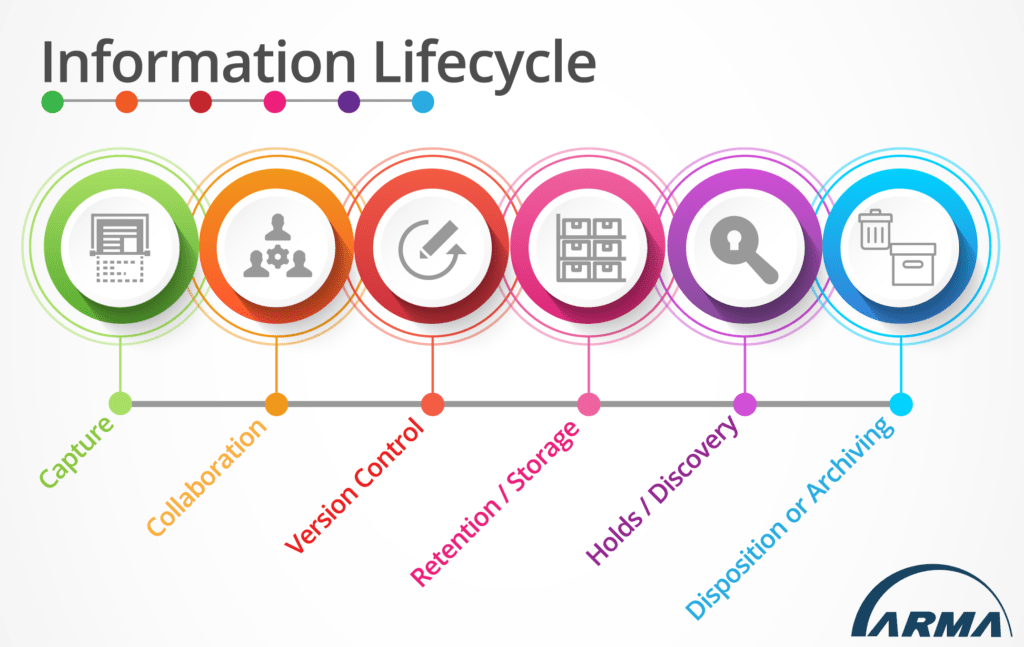By Julia Rose Vetterick, Content Marketing Specialist for Access Sciences

Even though it’s not often at the top of a company’s list of priorities, it’s no secret that construction is a very document-heavy industry. Every step in an engineering and construction project requires documentation, meaning there are countless document drafts, document revisions, and final versions.
Bid proposals, contract agreements, specifications, schedules, architectural drawings, electrical drawings, daily reports, safety reports… the list goes on and on.
These documents become records, capturing the progression of a project to fulfill legal and industry requirements, define work processes, solve any potential disputes between parties, and inform future projects.
While the easiest path would be to take all documents and simply place them into an Enterprise Content Management (ECM) system, that’s not best practice – and it’s not what is ultimately going to add the most value to a project or company. To really maximize the value of construction records, companies should leverage records management.
Following are 5 Ws of records management and its role in the construction industry:
WHAT is records management?
ARMA International defines Records & Information Management (RIM) as “the field of management responsible for establishing and implementing policies, systems, and procedures to capture, create, access, distribute, use, store, secure, retrieve, and ensure disposition of an organization’s records and information.”
It’s important to note – all records are documents, but not all documents are records. A document becomes a record once it’s captured as “evidence” of an organization’s decisions and/or activities.
The image below defines an information lifecycle. Source: ARMA International – Mapping Document Management Processes (Leveraging an Information Lifecycle)

WHEN does records management take place?
Records management is an ongoing process. It starts before a construction project begins and continues well after it ends, carrying each project-related record from the Capture stage to the Disposition/Archive stage of the information lifecycle.
Once a document is created and captured as a record, organizations should apply established access and permission rules to govern visibility into the documents. Should everyone have access to view and edit an architectural drawing? Certainly not. This also applies to specifications, schedules, reports, etc.
What happens if a construction document goes through edits so there’s an updated version to capture as a record? Someone (typically, a document control team) would work behind the scenes to make sure the most up-to-date, accurate version is always accessible. No one, especially in the construction industry, wants to be working from an outdated record.
It’s also important to consider where an organization’s records are stored and how long they should be kept there. Then, once that record meets the end of its retention period, how should it be disposed of or archived? Legal and industry requirements often dictate the answers to those questions.
WHO does records management benefit?
The short answer is everyone in your organization – and some people outside of your organization. Employees, clients, and partners each interact with organizational records at one point or another, whether they’re viewing, editing, approving, and/or signing.
And each of those stakeholders needs an ECM system that’s easy to navigate and records that are secure and easy to access.
In 2012, a McKinsey study found that knowledge workers spent 19% of their time searching for and gathering information. Since then, most companies’ data sprawl has grown exponentially – especially with the recent move to remote/hybrid work environments. That percentage of time spent searching for information has likely grown.
Prioritizing records management can help make sure stakeholders are able to access the documents they need when they need them.

WHY do we need records management for construction projects?
Again, construction is a very document-intensive industry, and organizations need to find a good balance between (1) keeping all documents as records (which creates clutter in your ECM system) and (2) not capturing the records necessary to keep operations efficient, compliant, and safe.
To support efficient construction practices, records management can ensure the most up-to-date version of a record is available, so the team is always working from relevant, accurate information. After a project is completed, records may be stored and used to inform future projects of best practices and lessons learned, and support future construction maintenance and upgrade requirements.
For compliance requirements, records management can ensure all legal and industry standards are met. For example, certain environmental, health, and safety standards are expected to be met in every construction project. It’s best to remain proactive when fulfilling those compliance needs, maintaining records security and accessibility to avoid fines.
Records management also helps keep construction projects safe. Identifying and documenting potential hazards, documenting risk mitigation steps, recording actual hazardous events, and maintaining Safety Data Sheets all support sustaining the safest work environment possible.
WHERE should we start?
Organizations can begin by looking at their own RIM efforts and assessing their current state.
If your current content program looks like a repository housing countless document drafts, document revisions, and final versions, it may be time to re-evaluate your record-related policies, rules, processes, and procedures.
While records management is no easy feat, the benefits that come with a robust RIM program make it worth the effort.

About Access Sciences
Since 1985, Access Sciences’ team of experts has coupled best practices in intelligent information management with industry expertise to address clients’ unique information needs.
Julia Rose Vetterick is the content marketing specialist for Access Sciences, producing content on information governance, technology enablement, and business strategy.
